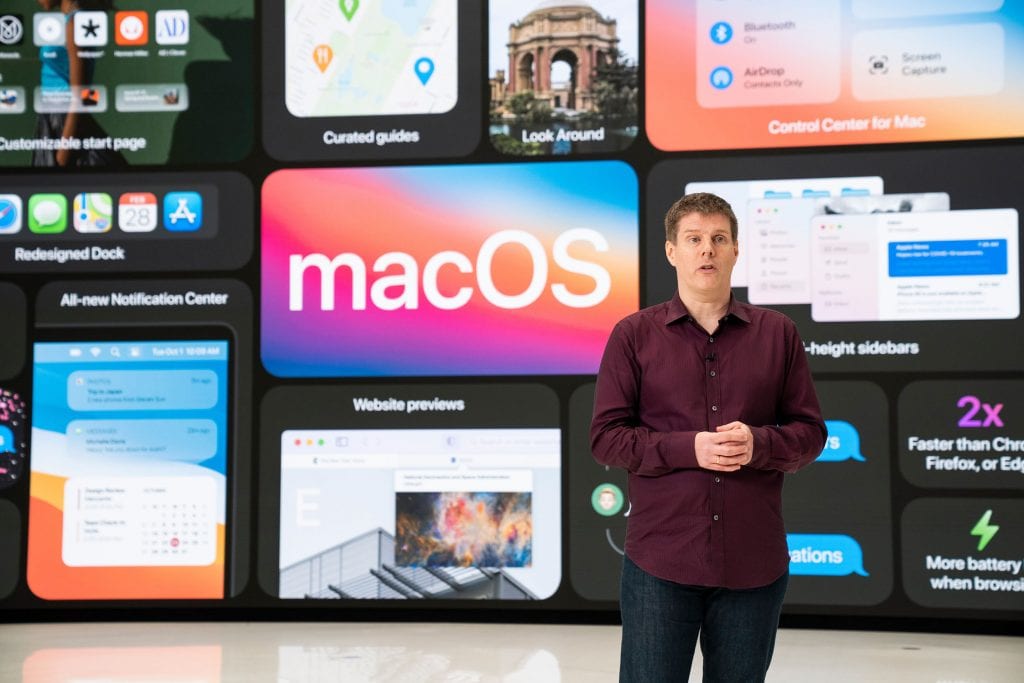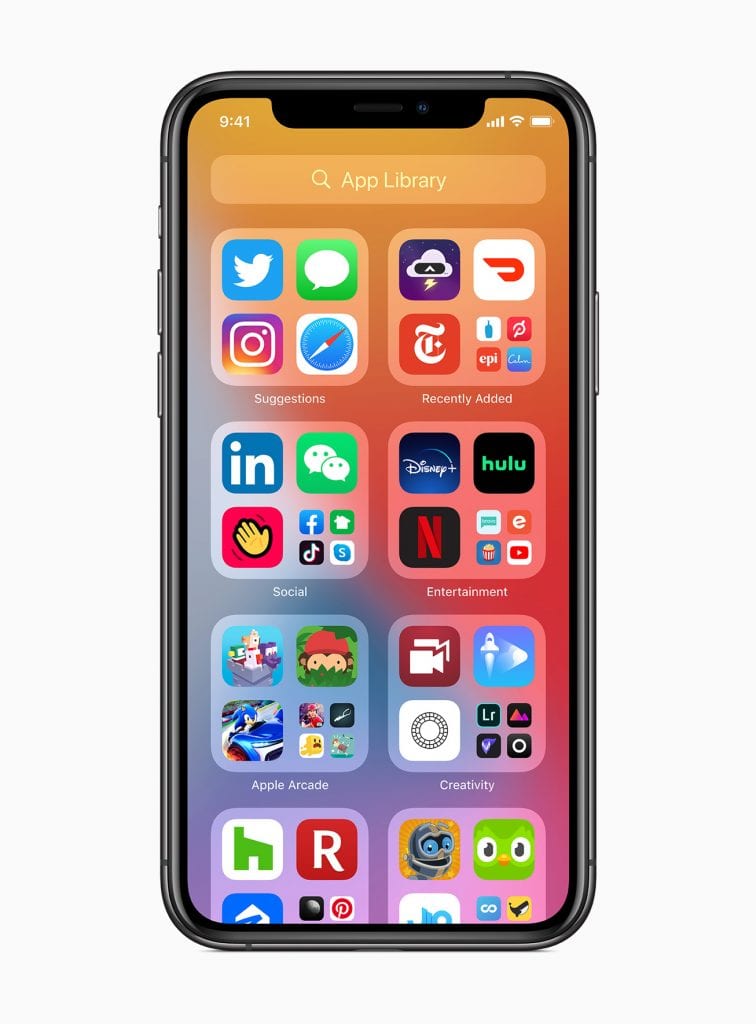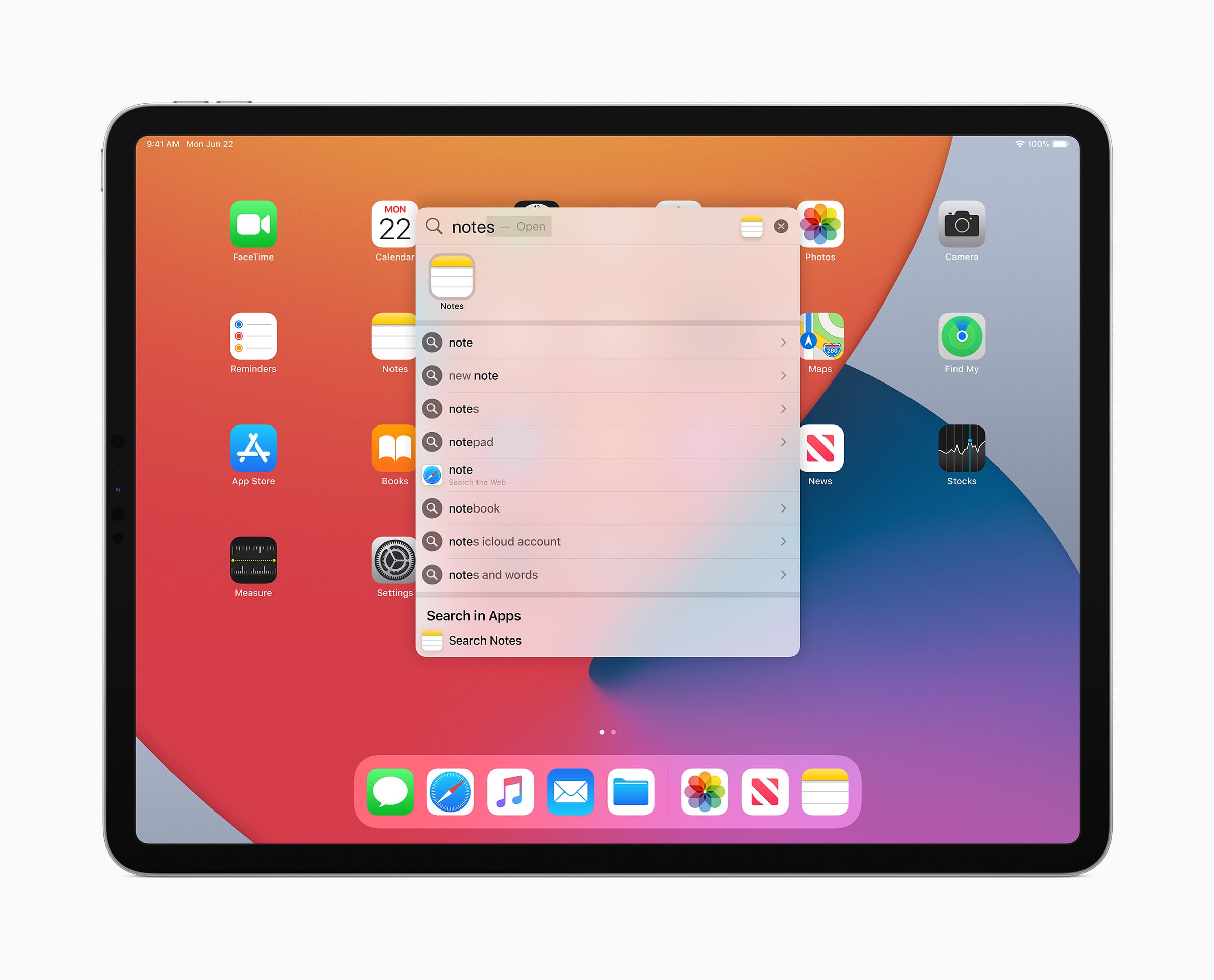What to expect from iOS 14 and iPadOS 14
 Apple kicked off its annual developer’s conference Monday with a traditional keynote presentation to show off their latest developments. This year’s focus was solely on software and not hardware, centering around the introduction of iOS 14, iPadOS 14 and the new Mac operating system called Big Sur. As in years past, Apple highlighted each of the new features in these operating systems, with the intent of releasing the software updates to the public in the fall.
Apple kicked off its annual developer’s conference Monday with a traditional keynote presentation to show off their latest developments. This year’s focus was solely on software and not hardware, centering around the introduction of iOS 14, iPadOS 14 and the new Mac operating system called Big Sur. As in years past, Apple highlighted each of the new features in these operating systems, with the intent of releasing the software updates to the public in the fall.
When iOS 13 was released last year, Apple split the operating systems for iPhone and iPad and introduced iPad OS 13 as a standalone operating system for the larger tablet. This made sense, as the iPad already incorporated features unavailable on the iPhone, like split-screen multitasking and the app dock. They also added the ability to add app widgets to the left side of the iPad’s home screen to make better use of the extra real estate there. A central focus of iPadOS was to treat the iPad more like a computer, as evidenced by Apple adding support for trackpads and a mouse to the iPad earlier this year.
This year Apple went in the opposite direction with iOS 14, primarily focusing on new features and display layouts for the iPhone. This makes sense, as the size of the larger iPhone screens are closing in on the size of an iPad mini and the home screen layout of apps hasn’t changed much since the original iPhone.
Here’s a quick rundown of the major features you can expect to see when iOS 14 and iPad OS 14 are released in the fall.
 iPhone Widgets on the home screen
iPhone Widgets on the home screen
Widgets have been available on the iPhone for several years now, but many users overlooked them since they require swiping away from the screen to view. iOS 14 changes this and allows you to place widgets right on the home screen with your apps. The new widgets present timely information at a glance and can be pinned in different sizes on any Home Screen page. Users can create a Smart Stack of widgets, which uses on-device intelligence to surface the right widget based on time, location, and activity.
Home Screen pages can display widgets that are customized for work, travel, sports, entertainment, and other areas of interest. So for example you might have all your aviation apps organized on one screen, with a few widgets at the top showing the latest METAR for your home airport, and another showing your recency of experience using data from your digital logbook. It will be interesting to see how aviation app developers support this feature.
App Library for iPhone
 The home screen layout on iPhone hasn’t changed much since Steve Jobs introduced the first iPhone in 2007. The most notable improvement was the folder concept introduced in iOS 4, but the reality is most people still have many pages of disorganized apps on their devices (we speak from experience—past the second page it’s all forgotten).
The home screen layout on iPhone hasn’t changed much since Steve Jobs introduced the first iPhone in 2007. The most notable improvement was the folder concept introduced in iOS 4, but the reality is most people still have many pages of disorganized apps on their devices (we speak from experience—past the second page it’s all forgotten).
With iOS 14, Apple introduced a concept called App Library. This alternate view automatically organizes all of your apps into one simple, easy‑to‑navigate view. Apps are sorted by category and your most-used apps are always just one tap away. Think of them as smart folders which track your usage and make it easier to get to the apps you use most often, without having to manually sort and drag apps from screen to screen as you do now.
App Library is only for the iPhone, so you won’t see this feature on your iPad
Video Picture-in-Picture and other improvements
iPad users have enjoyed the ability to display videos in a smaller picture-in-picture window for several years now, and this feature is now available for iPhone. This is great for pilots reviewing ForeFlight or pilot training videos while interacting with aviation apps and charts.
 There is also a wide variety of improvements to the Messages app, new emojis, Siri updates, Maps improvements, language translations and updates to privacy, but you likely won’t find any of these changing the way you use your iPad or iPhone in the cockpit.
There is also a wide variety of improvements to the Messages app, new emojis, Siri updates, Maps improvements, language translations and updates to privacy, but you likely won’t find any of these changing the way you use your iPad or iPhone in the cockpit.
There is also a new feature which allows car manufacturers to allow iPhone users to unlock their car doors using their iPhone. Maybe Cirrus will incorporate the iOS Car Key into 2021 models – those SR22 wireless key fobs always seem to get in the way.
One small thing we really like is a change to the display of incoming call notifications, which display in a compact design at the top of the screen and allow you to continue multitasking if needed.
What’s new in iPad OS 14
So what can iPad pilots look for after installing iPad OS 14 in the fall? Not much really, but there are a few changes to point out:
• Sidebar navigation layout – Apple redesigned their native apps, including Photos, Files, Notes, Calendar, and Apple Music, to use a sidebar menu to simplify operations in the app, instead of relying on buttons across the top and bottom of the screen.
• Spotlight Search – the search function has been redesigned and uses a light, compact floating window accessible from any screen or app and is the one place to quickly find anything, from locating and launching apps to accessing contacts, files, and quick information, to getting answers to common questions about people or places. Mac computer users will see a familiar resemblance to the same Spotlight Search feature on Apple computers.
• Scribble to Text – iPadOS 14 brings Scribble to iPad with Apple Pencil, allowing users to write in any text field — where it will automatically be converted to typed text — making actions like replying to an iMessage or searching in Safari fast and easy. This could make for a better in-cockpit experience when copying clearances and other in-flight notes.
iOS 14 and iPad OS will be available as a free update in the fall, most likely coinciding with the launch of the iPhone 12.







Apple has already made official the new updated versions of its operating systems iOS 14, and here we tell you the release date, new features, and supported devices of iOS 14, iPadOS 14, watchOS 7, and macOS Big Sur.
What is the release date?
One of the biggest things in my eyes is not the iOS14 or iPadOS14, but the ARM-based Macs and macOS 11 BigSur. To let run the iPadOS apps on macOS11@ARM-Mac means using the same apps all over all platforms.